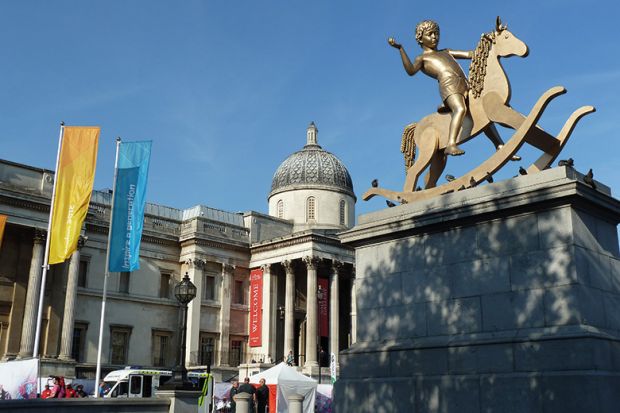This book deals with a topic of some currency in architecture, the proliferation of temporary urbanism. Since the early 2000s, it has become an ever more present theme, given force, it is often said, by the global financial shocks that for a time made architecture hard to do at all. It has since become a style. The US Pavilion at the 2012 Venice Biennale, Spontaneous Interventions, was devoted to it; among other examples cited here, the transformation of one of Paris’ riverbanks into an impromptu beach has been a huge hit, and the regeneration of London’s King’s Cross area has pop-up architecture in the vanguard.
It is a great topic. Temporary urbanism is everywhere and yet no one has adequately explained its appeal. When Assemble, a vogue-ish London collective, won the Turner Prize in 2015, the reaction was varying degrees of bafflement, some emanating from the group themselves, who were surprised to be nominated at all. An architecture of improvisation and bodging, it’s never very clear where it stands, whether it’s critique or collusion, or just a representation of the times.
Ali Madanipour sets out to explain the phenomenon through varying concepts of time in relation to urbanisation. The book’s first part explores time from Descartes to Marx as an instrumental, disciplinary force that keeps society in check; the second describes time as a set of existential and phenomenological questions, from Husserl to Bergson to Deleuze; the third considers time’s potential to destabilise our sense of order, and it is in this part of the book that the critical possibilities of temporary urbanism are most apparent.
The most interesting parts of Cities in Time invoke the psychological concept of anxiety – interesting because the strange atmospheres that temporary urbanism creates are so widely experienced, yet so little discussed. Madanipour is quite right here to link the term anxiety with temporality, and with another word much in vogue in architecture, “contingency”. It’s clear that contingency might be both representative of wider anxieties about the future, and productive of anxiety itself. Those temporary spaces aren’t often restful. “The contingent approach”, Madanipour writes, “may open up spaces of new possibility, but at the same time increases the sense of precariousness and insecurity.”
What’s less clear is how precisely this works in relation to urbanism. If anxiety is a characteristic of temporary urbanism, how is it produced or manifest at the level of individual buildings? It would be good to know more about that, as well as the intentions of the makers of these buildings. Do they see them as representations of cultural anxiety? As pseudo-vaccines that inure us to anxiety by exposing it to us in small quantities? Or critical responses that reveal, Kierkegaard-like, the nature that we, as humans, simply have to bear?
We don’t really find out the answers to these questions, for this is, in the end, much more a book about time than it is about buildings. To disentangle them would need more attention to the book’s highly suggestive images, which range from Roma encampments in Turin to the public spaces of Tehran and the refined nomadism of Trafalgar Square’s Fourth Plinth commission. I wanted to know more about them and how precisely they illuminate – or don’t – the book’s theories. But on time, Madanipour is authoritative, and this is a robust contribution on an emergent topic.
Richard J. Williams is professor of contemporary visual cultures and head of the School of History of Art, University of Edinburgh, and author of Sex and Buildings: Modern Architecture and the Sexual Revolution (2013).
Cities in Time: Temporary Urbanism and the Future of the City
By Ali Madanipour
Bloomsbury, 216pp, £85.00 and £21.99
ISBN 9781474220729, 0712 and 0743
Published 23 February 2017
POSTSCRIPT:
Print headline: Build them up to tear them down
Register to continue
Why register?
- Registration is free and only takes a moment
- Once registered, you can read 3 articles a month
- Sign up for our newsletter
Subscribe
Or subscribe for unlimited access to:
- Unlimited access to news, views, insights & reviews
- Digital editions
- Digital access to THE’s university and college rankings analysis
Already registered or a current subscriber? Login




